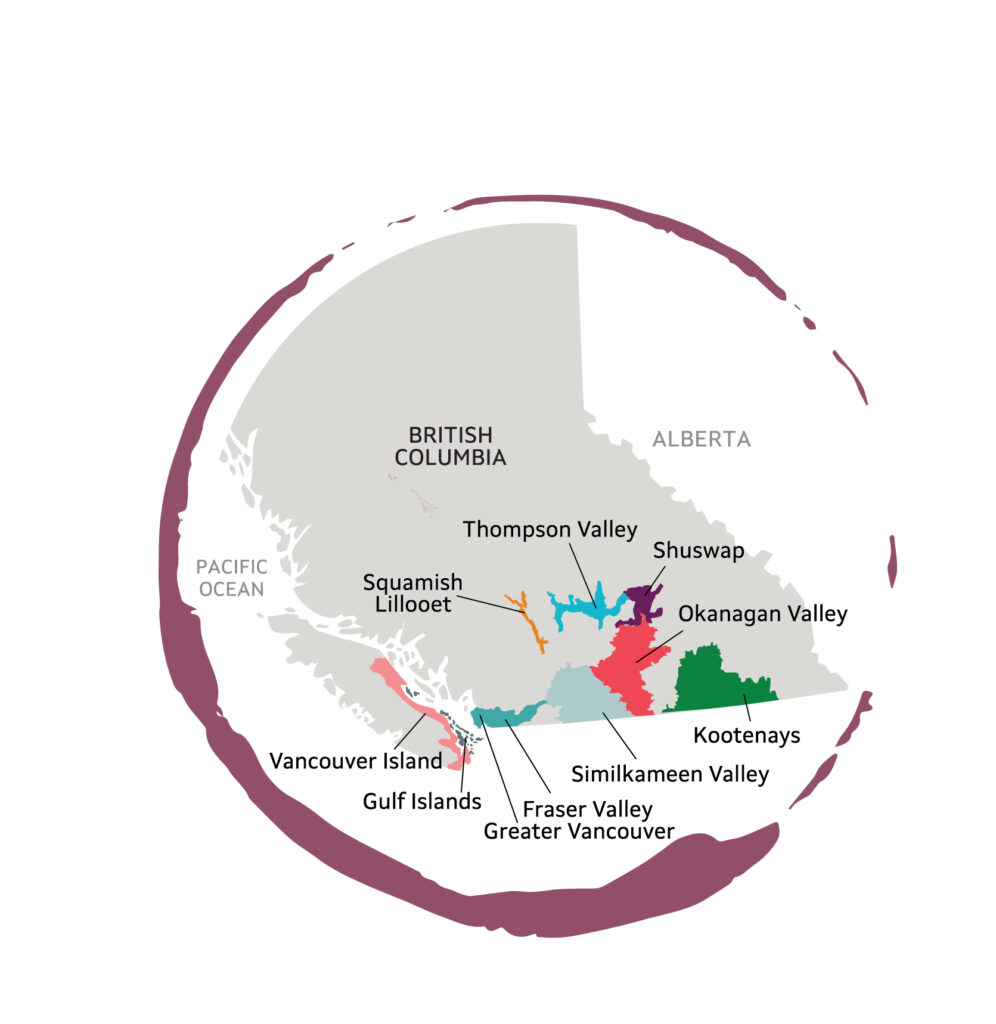Explore
BC Wine Regions

From Ground to Glass: Discover the Terroir Behind British Columbia Wines
One of the key drivers behind the continued growth of British Columbia’s wine industry is the establishment of Geographical Indications (GIs) and Sub-GIs. These designations recognize the distinct terroir of winegrowing regions across the province and offer consumers a clearer understanding of where their wine comes from.
What Are GIs and Sub-GIs?
GIs serve as official appellations of origin, similar to France’s AOC or Italy’s DOCG systems. They’re used to define and protect specific wine-producing areas, ensuring wines labeled from a region truly reflect the character and quality of that place.
There are currently 9 Geographical Indications in BC:
Within the Okanagan Valley GI, there are 11 officially recognized Sub-GIs, each reflecting microclimates, soil types, and unique topographies:
Outside of the Okanagan, Vancouver Island is home to one recognized Sub-GI: Cowichan Valley.
Why GIs Matter to Wine Lovers
Under BC’s Wines of Marked Quality Regulation, wines bearing the VQA (Vintners Quality Alliance) symbol must contain 100% BC-grown grapes. For those labeled with a GI designation, at least 95% of the grapes must come from that specific GI, with up to 5% allowed from other parts of BC.
These standards help:
• Assure authenticity and traceability
• Promote agri-tourism and wine education
• Encourage quality winemaking and regional identity
Many producers have gone further by offering single-vineyard wines or small-lot bottlings, highlighting hyper-local terroir. Even within the same sub-GI, individual vineyards may have unique soil compositions, aspects, and elevations, offering wine lovers a deeper, more nuanced “sense of place.”
The 9 Distinct GI's of BC
Click on images below to access regional information, driving maps and featured listings.










